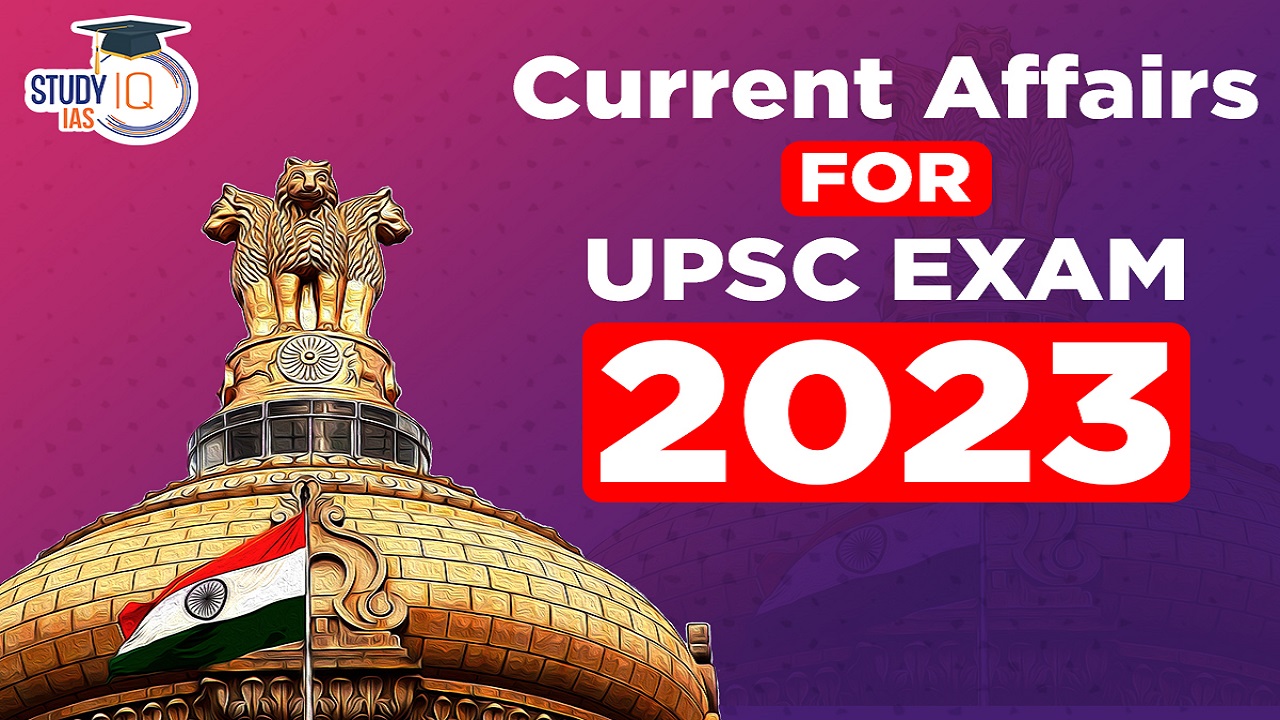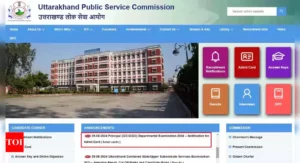Current Affairs 29th June 2023 for UPSC Prelims Exam
National Company Law Appellate Tribunal (NCLAT)
Context: The National Company Law Appellate Tribunal (NCLAT) has upheld the penalty of Rs 1,338 crore imposed by the Competition Commission of India (CCI) on Google for its anti-competitive conduct in the Android ecosystem.
About the National Company Law Appellate Tribunal (NCLAT)
- NCLAT is a quasi-judicial body in India that was established under the Companies Act, 2013.
- Functions of NCLAT: It acts as the Appellate Tribunal for hearing appeals against the orders of
- National Company Law Tribunal (NCLT),
- Insolvency and Bankruptcy Board of India (IBBI),
- Competition Commission of India (CCI), and
- National Financial Reporting Authority (NFRA).
- Composition: The NCLAT includes a Chairperson, 3 judicial members, and 2 technical members appointed by the Central Government. It consists of a total of not more than eleven members.
About the National Company Law Tribunal (NCLT)
- About: It is a quasi-judicial body in India that adjudicates issues relating to Indian companies. NCLT has been given the same powers and procedures as a court of law.
- Establishment: The tribunal was established under the Companies Act 2013 based on the recommendation of the Balakrishna Eradi committee.
- Composition: The bench of NCLT consists of a President and such number of other Judicial and Technical Members as may be prescribed.
- The President of the Tribunal shall be appointed by the Central Government after consultation with Chief Justice of India.
- The Members are to be appointed by the Central Government on the recommendation of a Selection Committee.
- A person who is or has been judge of a High Court for five years is eligible to be appointed as president of National Company Law Tribunal.
- Role and responsibilities:
- All the proceedings of a company related to arbitration, arrangements, compromise, reconstruction, and winding up will be only be disposed of by the Tribunal.
- The tribunal is also vested with power to dispose of case related to insolvency under the Insolvency and Bankruptcy Code of 2016.
- (Note: For the above matters civil courts will have no jurisdiction.)
- All the cases that were pending before the Board for Industrial and Financial Reconstruction (BIFR) and Sick Industrial Companies (Special Provisions) Act of 1985, will only be disposed of by the tribunal.
- The tribunal will also take up cases related to the oppression and mismanagement of the company.
About the Commission of India (CCI)
- It is a statutory body of the Government of India responsible for enforcing the Competition Act, 2002,
- Establishment: CCI was established in 2009 based on the recommendations of the Raghavan committee.
- Composition: The Commission consists of one Chairperson and six Members who shall be appointed by the Central Government.
- Role and responsibilities:
- To make the markets work for the benefit and welfare of consumers.
- To ensure fair and healthy competition in economic activities in the country for inclusive growth and development of the economy.
- To implement competition policies to ensure the most efficient utilization of economic resources.
- To develop and nurture effective relations and interactions with sectoral regulators to ensure alignment of sectoral regulatory laws with the competition law.
About the Insolvency and Bankruptcy Board of India (IBBI)
- IBBI was established in 2016 under the Insolvency and Bankruptcy Code, 2016 (IBC).
- Objective: It is a key pillar of the ecosystem responsible for implementation of the IBC.
- IBC provides a consolidated framework that governs insolvency and bankruptcy proceedings for companies, partnership firms, and individuals.
- Headquarters: New Delhi
- Composition: The IBBI Governing Board is headed by the Chairperson.
- The other members of the IBBI Board include: Three whole time members, a member from the Reserve Bank of India (RBI), and five members nominated by the Union Government of which three members function as full-time members.
- Role and responsibilities:
- It has regulatory oversight over the Insolvency Professionals, Insolvency Professional Agencies, Insolvency Professional Entities and Information Utilities.
- It writes and enforces rules for processes, namely, corporate insolvency resolution, corporate liquidation, individual insolvency resolution and individual bankruptcy under the Code.
- It has also been designated as the ‘Authority’ under the Companies (Registered Valuers and Valuation Rules), 2017 for regulation and development of the profession of valuers in the country.
About the National Financial Reporting Authority (NFRA)
- Establishment: NFRA was constituted in 2018 by the Government of India under section 132 (1) of the Companies Act, 2013. It is an audit regulator.
- Composition: It consists of a chairperson, who shall be a person of eminence and having expertise in accountancy, auditing, finance or law, appointed by the Central Government and such other members not exceeding 15.
- Role and responsibilities:
- Recommends accounting and auditing policies and standards to be adopted by companies for approval by the Central Government.
- Monitor and enforce compliance with accounting standards and auditing standards.
- Oversee the quality of service of the professions associated with ensuring compliance with such standards and suggest measures for improvement in the quality of service.
- Protect the public interest.
Current Affairs 28th June 2023 for UPSC Prelims Exam
National Research Foundation (NRF) Bill, 2023
Context: The Union Cabinet has approved the National Research Foundation (NRF) Bill, 2023.
About National Research Foundation (NRF) Bill, 2023
- Definition: The Bill will establish NRF, an apex body to provide high-level strategic direction of scientific research in the country as per recommendations of the National Education Policy (NEP), at a total estimated cost of Rs. 50,000 crores during five years (2023-28).
- The bill will also repeal the Science and Engineering Research Board (SERB) established by an act of Parliament in 2008 and subsume it into NRF.
- Need: This Bill was necessary because current laws made it hard for private research organisations to contribute to a funding body such as the NRF.
- Composition:
- Administrative Department: The Department of Science and Technology (DST) will be the administrative Department of NRF.
- Governing Board: DST will be governed by a Governing Board consisting of eminent researchers and professionals across disciplines.
- Members: Prime Minister will be the ex-officio President of the Board.
- The Union Minister of Science & Technology & Union Minister of Education will be the ex-officio Vice-Presidents.
- Executive Council: NRF’s functioning will be governed by an Executive Council chaired by the Principal Scientific Adviser to the Government of India.
- Objective: NRF will promote Research and Development (R&D) and foster a culture of research and innovation throughout India’s universities, colleges, research institutions, and R&D laboratories.
- NRF shall ensure that scientific research is conducted and funded equitably with greater participation from the private sector.
- When the NRF starts functioning, close to ₹36,000 crore is expected from the private sector (as investments into research).
- The NRF will prioritize research funding and the executive council will decide on what areas need support.
- Implementation: NRF will forge collaborations among the industry, academia, and government departments and research institutions.
- It will create an interface mechanism for participation and contribution of industries and State governments in addition to the scientific and line ministries.
- It will focus on creating a policy framework and putting in place regulatory processes that can encourage collaboration and increased spending by the industry on R&D.
- The government will contribute ₹10,000 crore over five years.
- The DST, the main source of funds for several autonomous research bodies, will continue to get the budget it annually receives.
National Organ and Tissue Transplant Organisation (NOTTO)
Context: The National Organ and Tissue Transplant Organisation (NOTTO) has issued a warning against private websites and social media posts promoting and offering organs for trade.
About National Organ and Tissue Transplant Organization (NOTTO)
- Definition: National Organ and Tissue Transplant Organization (NOTTO) is a national level organization set up under Directorate General of Health Services, Ministry of Health and Family Welfare, Government of India.
- Aim: National Network division of NOTTO functions as apex centre for:
- All India activities of coordination and networking for procurement and distribution of Organs and Tissues and
- Registry of Organs and Tissues Donation and Transplantation in the country.
- Divisions: NOTTO has two divisions:
- National Human Organ and Tissue Removal and Storage Network: This has been mandated as per the Transplantation of Human Organs (Amendment) Act 2011.
- It is the nodal networking agency for Delhi and shall network for Procurement Allocation and Distribution of Organs and Tissues in Delhi.
- National Biomaterial Centre: The Transplantation of Human Organs (Amendment) Act 2011 has included the component of tissue donation and registration of tissue Banks.
- The main aim of establishing this centre is to fill up the gap between ‘Demand’ and ‘Supply’ as well as ‘Quality Assurance’ in the availability of various tissues.
- National Human Organ and Tissue Removal and Storage Network: This has been mandated as per the Transplantation of Human Organs (Amendment) Act 2011.
- Functions of NOTTO:
- Network with similar regional and state level organizations.
- All registry data from States and Regions would be compiled and published.
- Creating awareness, promotion of organ donation and transplantation activities.
- Co-ordination from procurement of organs and tissues to transplantation when organ is allocated outside the region.
- Dissemination of information to all concerned organizations, hospitals and individuals.
- Monitoring of transplantation activities in the Regions and States and maintaining databank in this regard.
- To assist in data management for organ transplant surveillance & organ transplant and Organ Donor registry.
- Consultancy support on the legal and non-legal aspects of donation and transplantation.
- Coordinate and Organize trainings for various cadre of workers.
- Recent Observation by NOTTO: It has issued a warning against private websites and social media posts promoting and offering organs for trade.
- The NOTTO has written to the Principal Secretary (Health) of every State and Union Territory seeking strict monitoring of, and steps to prevent, organ trafficking.
- As per NOTTO, the online promotion was in violation of the provisions of the Transplantation of Human Organ and Tissue Act, 1994 and Rules.
- Such activities were punishable offence under Section 18 of the Act, with fines ranging from ₹20 lakh to ₹1 crore and imprisonment from five to 10 years.
PM-PRANAM Scheme
Context: The Cabinet Committee on Economic Affairs (CCEA) has approved the PM-PRANAM (PM Programme for Restoration, Awareness, Generation, Nourishment and Amelioration of Mother Earth) scheme.
PM-PRANAM Scheme
- Definition: PM-PRANAM stands for PM Programme for Restoration, Awareness, Nourishment and Amelioration of Mother Earth.
- The scheme included a bouquet of various schemes which would boost farmers’ income, strengthen natural / organic farming, rejuvenate soil productivity, and ensure food security.
- Budget: ₹3,70,128.7 crore.
- Reduction in Chemical Fertilizers: The scheme aims to reduce the use of chemical fertilizers by incentivizing state.
- Under the scheme, the states, which will adopt alternative fertilizers will be incentivized with the subsidy that is saved by reducing the use of chemical fertilizers.
- For instance, suppose a state is using 10 lakh ton of conventional fertilizer.
- If it reduces its consumption by 3 lakh ton, then the subsidy saving would be ₹3,000 crore.
- Out of that subsidy savings, the Centre will give 50% of it — ₹1,500 crore to the state for promoting the use of alternative fertilizer and other development works.
- Under the scheme, the states, which will adopt alternative fertilizers will be incentivized with the subsidy that is saved by reducing the use of chemical fertilizers.
- Promote Bio Fertilizers: The scheme would promote use of nutrient-based, biofertilizers for sustainable agriculture.
- Reduce Subsidy Burden: The scheme aims reduce the subsidy burden on chemical fertilizers.
- Subsidy burden was around Rs 2.25 lakh crore in 2022-2023 which is 39% higher than the previous year’s figure of Rs 1.62 lakh crore.
Green Credit Scheme
Context: The Environment Ministry has issued a draft notification detailing a proposed ‘Green Credit Scheme’.
About the Green Credit Scheme
- Definition: The Ministry of Environment, Forests and Climate Change (MoEFCC) has issued the draft ‘Green Credit Programme Implementation Rules 2023’ under the Environment Protection Act, 1986.
- The draft has proposed generation and trading of green credits.
- Implementation: Green Credits Programme has been launched under Mission LiFE, one of India’s nationally determined contributions (NDC) to the UNFCC.
- The mechanism will be implemented in phases.
- Initially, 2-3 activities from the eight sectors will be considered for designing and piloting the Programme.
- Green Credits will be tradable outcomes and will act as incentives.
- In the beginning, Green Credits will be made available to individual and entities, engaged in selected activities and who undertake environmental interventions.
- These Green Credits will be made available for trading on a domestic market platform.
- Aim: Green Credit Programme aims to create a market-based mechanism for providing incentives in the form of Green Credits for environment positive actions to:
- Individuals
- Farmer producer organisations and cooperatives
- Forestry enterprises
- Sustainable agriculture enterprises
- Urban and rural local bodies
- Private sectors, industries and organisations.
- Significance:
- Green Credit Programme will encourage private sector industries and companies as well as other entities to meet their existing obligations, stemming from other legal frameworks, by taking actions which are able to converge with activities relevant for generating or buying Green Credits.
- Eco mark-based green credit will encourage manufacturers to obtain eco-mark labels for their goods and services.
- Sustainable building and infrastructure-based Green Credit will encourage the construction of buildings and other infrastructure using sustainable technologies and materials.
- The programme also envisages to create a mass movement around environment positive actions and realise the vision of “Mission LiFE” through pro-planet people and entities.
- Sectors:
- The eight identified sectors include:
- Increasing the green cover across the country through tree plantation and related activities.
- Water conservation and harvesting,
- Water-use efficiency.
- Natural and regenerative agricultural practices and land restoration,
- Soil health and nutritional value of food produced.
- Waste management and
- Steps for reducing air pollution and other pollution abatement activities.
- Other Sectors:
- The draft has also included mangrove conservation and restoration-based green credit to promote measures for the conservation and restoration of mangroves.
- The eight identified sectors include:


 MPSC Syllabus 2025, Exam Pattern, Downlo...
MPSC Syllabus 2025, Exam Pattern, Downlo...
 IB ACIO Salary 2025, In-Hand Salary, All...
IB ACIO Salary 2025, In-Hand Salary, All...
 UKPSC Lower PCS Recruitment 2024: Exam D...
UKPSC Lower PCS Recruitment 2024: Exam D...





















